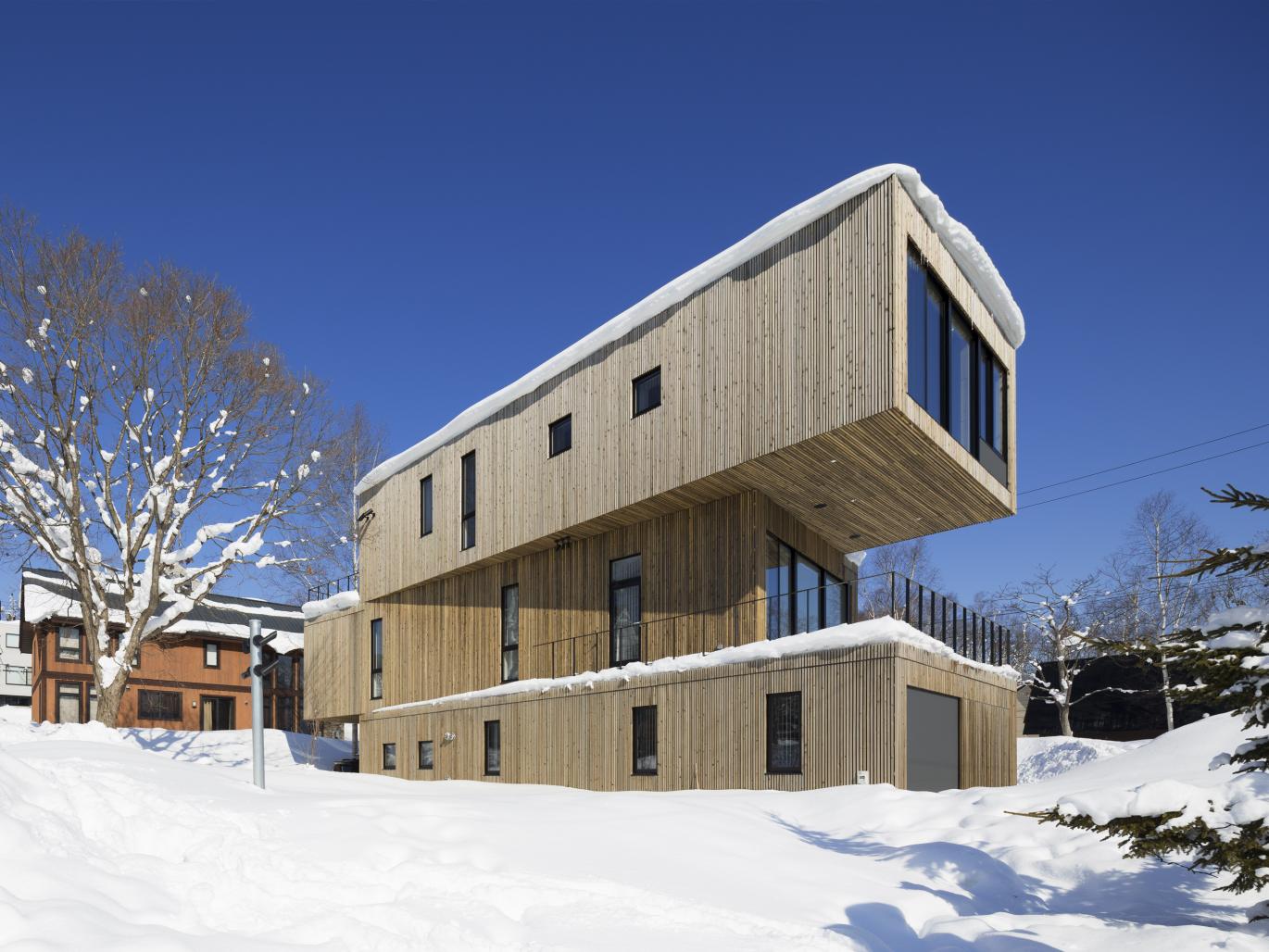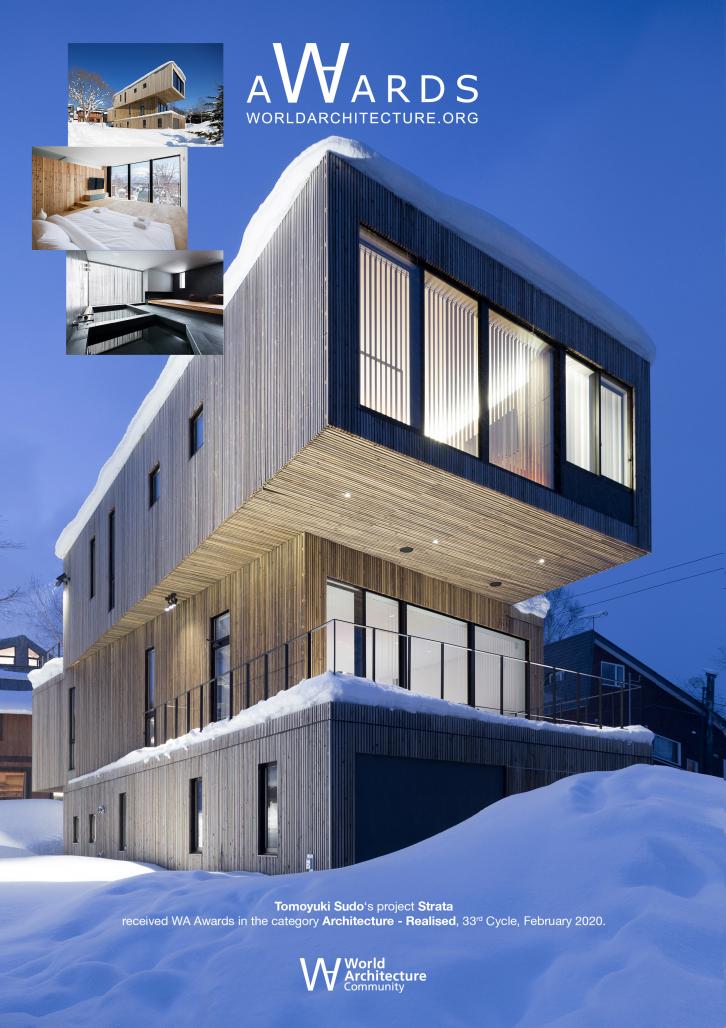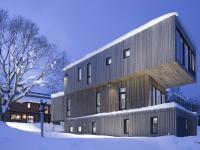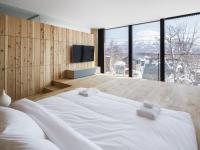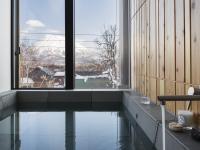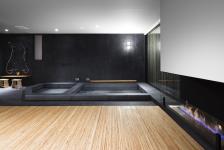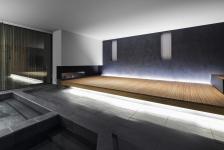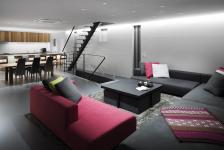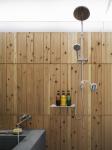The Strata House pushes the boundaries of residential design with an abstracted design far from the familiarities of typical housing tropes. Three cleanly defined rectilinear blocks stack up in a seemingly carefree manner, the gesture akin to a child’s play of building blocks writ large.
The house is decidedly contemporary, yet the architectural gymnastics is derived from the more grounded, holistic integration of client requirements, considerate site response, and fulfillment of very basic needs.
The site is bordered by a house on one side, another to the rear, and a view of Mt. Yotei to the front in the northeast. The house is placed length-wise toward the premium vista, with a cluster of existing trees tucked in between the house and neighbor on the side. Rather than blocking the prized mountain view, this arrangement generously shares it by allowing visual porosity through the plot.
The client had requested a continuous entertainment space that extends into the outdoors. The house’s stacked composition results in several sheltered outdoor spaces that become a parking lot on the ground story and balcony on the second story abutting the living space. The client also desired a clear view of Mt. Yotei, which comes about through the slight shift of the second story volume.
The form follows function adage is thus well exemplified in the Strata house. The brevity of formal gestures reflects a reductionist approach, where nothing is done in excess. This fulfills yet another of the client’s request – that there should be no wastage of space in the design of the house.
The architectural stratification mirrors the organization of the internal layout to facilitate the entertainment of guests. On the ground story is the garage, storage, spa, and Japanese onsen-style bath laid in continuous sequence; on the second story are communal spaces comprising living, dining, kitchen, and balcony; the most private zone for sleeping is tucked away on the third story.
Throughout, spaces are arranged to flow seamlessly into the next. Long, under-utilized corridors are absent, and each space is of good size. The building’s tectonics also produces remnant edge surfaces where snow can settle. Thus in winter, the house, cloaked in white, blends into the environment.
In summer, the sandy tones of the timber-clad shell mean the house becomes one with the trees. This is another way the house engages with nature. The cedar wood from Southern Hokkaido is selected as it thrives in heavy snow environment, and is softer, lighter, and more durable. It also provides thermal insulation but is resistant to twist and cracks. An indigenous material, its use reduces the project’s carbon footprint and supports the local economy and artisans. Eight thousand timber pieces are used for the façade in all, applied by a single artisan.
Commonly found in Japanese homes, the use of Hokkaido cedar wood introduces a local aspect of the project. This allows the client, who is based in Hong Kong, to experience a strong sense of context. The use of natural timbers, with their unique wood grains and textures, gives the house character. Its vertical expression on the façade facilitates the clear reading of each volume. Designed for easy maintenance, a 20mm gap between each timber panel allows rainwater and snow to dry easily, thus preventing the growth of mold.
Like the distinct expression of the exterior blocks, each of the three story’s interiors is defined by different color and materiality. On the ground story, a contemplative atmosphere is created with dark-grey plaster and charcoal-colored stone tiles. This suits the spa function perfectly.
A timber-clad storage wall along the ground story’s length guides the movement of people forward. As one moves upwards through the house, the experience with timber increases. It culminates in the timber-clad master bedroom that appears to float above the landscape through full-height glass windows.
This meticulously crafted trajectory embodies a less binary, more visceral way of living. From macro gestures to the most utilitarian details, the Strata house enhances everyday living with reflection, drama, and delight in the slow reveal.
2014
2015
Type: Residence
Status: Completed
Structure: Steel structure
Site area: 710.42㎡
Total floor area : 311.22㎡
Building site: Hokkaido, Japan
Structure design: TOKTECH
Lighting design : Lighting M
Contractor: SUDO Construction Co., Ltd.
Photo: Kenji Masunaga
Tomoyuki Sudo
Strata by Tomoyuki Sudo in Japan won the WA Award Cycle 33. Please find below the WA Award poster for this project.
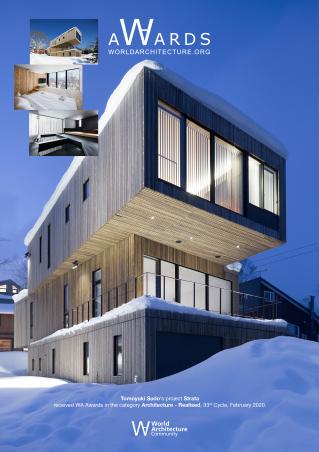
Downloaded 3 times.
Favorited 2 times
